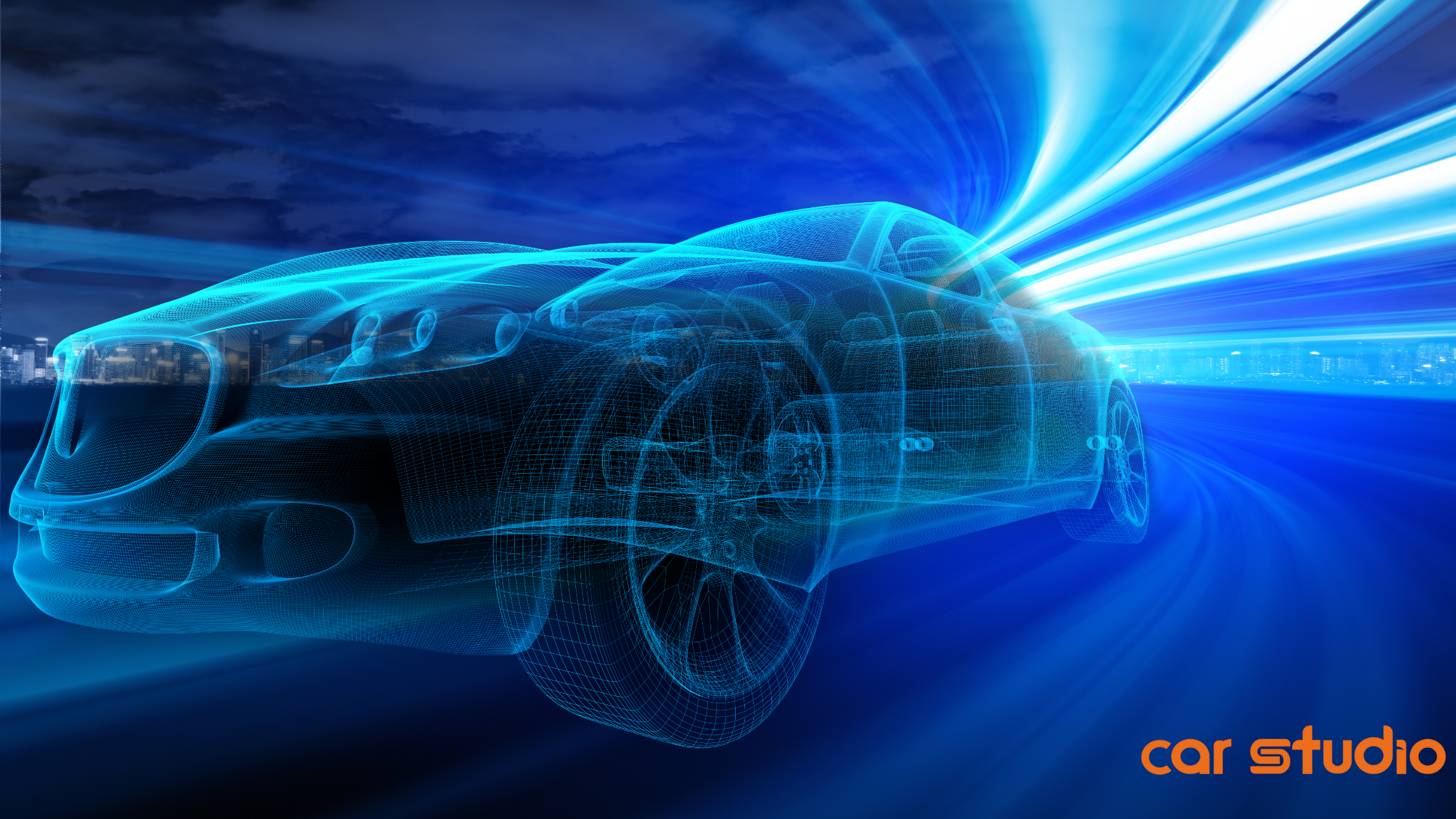
AI in Action: A Step-By-Step Look at the Car Imaging Workflow
AI in Action: A Step-By-Step Look at the Car Imaging Workflow Revolution
Introduction: Meeting Cars in the Digital Era
Not too long ago, the first impression of a car happened when you walked into a showroom. You’d open the door, breathe in the new-car smell, and take in the gleam of the paint under the dealership lights. Today, that first impression has shifted almost entirely online. Whether you’re buying your first compact SUV, browsing luxury sedans, or simply daydreaming about your next car, chances are your journey begins with photos on a screen.
And this is where a quiet but powerful revolution has begun. Artificial intelligence (AI) is no longer just a buzzword reserved for futuristic labs or sci-fi movies it’s now transforming one of the most practical, everyday processes in the automotive industry: car imaging.
What once required expensive cameras, professional studios, and hours of manual editing can now be done faster, cheaper, and at scale. But here’s the real story: this shift isn’t only about making cars look prettier. It’s about consistency, efficiency, cost-effectiveness, and, most importantly, selling smarter.
Let’s take a step-by-step journey through how AI is reshaping the car imaging workflow from capturing the very first photo to analyzing what works best in an online listing. Along the way, we’ll touch on real-world examples, personal anecdotes, and broader trends reshaping the industry.
The Old Struggles: Traditional Car Imaging
Before we dive into the solutions, let’s acknowledge the pain points that dealerships, marketplaces, and even OEMs have wrestled with for years.
1. Consistency and Quality
Ever scrolled through a listing site and noticed how some cars look like they were photographed in a professional studio while others look like they were shot hurriedly in a parking lot on a cloudy day? Inconsistency in lighting, angles, and backgrounds doesn’t just hurt aesthetics it damages trust. Customers associate visual consistency with professionalism, and professionalism with reliability.

2. Time-Consuming Processes
Editing car photos the old-fashioned way is tedious. Removing backgrounds, adjusting shadows, aligning colors, and stamping dealership branding often took hours. Multiply that by dozens or hundreds of cars, and suddenly the marketing team is drowning in Photoshop files.
3. Scalability Issues
A dealership with 10 cars could manage. But what about a large auto group with hundreds of new arrivals every week? Traditional workflows buckle under scale. Expanding inventory should be exciting, but instead, it often feels like a bottleneck.
4. High Costs
Professional photographers and editors don’t come cheap. For smaller dealerships, these costs could be prohibitive. Even for bigger players, margins are slim, and any opportunity to cut costs without cutting quality is worth gold.
In short, the traditional way was slow, expensive, inconsistent, and ill-suited for an increasingly digital-first market.
Step 1: Capturing the Initial Images
The first step in any workflow is capturing the raw material the photographs themselves.
AI can enhance, correct, and transform, but it still needs something to work with. The quality of your input defines the ceiling of your output. That’s why capturing clean, well-framed, and high-resolution images remains critical.
Car Studio AI has even published guidelines for capturing professional car photos for listings (see AI Transforms Car Imaging Workflow: Upload to Listing). These tips cover everything from using natural light to framing shots that showcase the car’s best features.
Personal note: I once tried photographing my own car in the driveway, thinking “AI will fix it.” And while yes, AI did wonders with the background and lighting, the smudges on the lens and poor angle couldn’t magically disappear. Lesson learned give AI good bones to work with, and it will build you a masterpiece.
Step 2: AI-Driven Editing and Enhancements
This is where the magic happens. Once the raw photos are uploaded, AI steps in as the invisible editor. Here’s what that looks like in practice:
Background Removal and Replacement
AI detects the car and instantly removes distracting backgrounds parking lots, buildings, or uneven lighting replacing them with standardized, dealership-approved, or branded backdrops. Imagine transforming a photo taken outside on a cloudy day into one that looks like it was shot in a high-end studio.
Shadow and Reflection Addition
Cars look unnatural if they “float” in images. AI solves this by generating realistic shadows and reflections that make vehicles appear grounded. This subtle enhancement creates a premium, authentic feel what psychologists call “visual trust cues.”
Logo and Branding Integration
Consistency builds brands. AI automatically places dealership logos, watermarks, or OEM branding across every photo. Whether you’re a local dealer or an international manufacturer, customers will instantly recognize your identity. (For a deep dive into this, see OEM Visual Branding: AI-Enhanced Car Images at Scale).

This stage turns raw captures into polished, professional, and brand-aligned images in a fraction of the time traditional editing would take.
And it’s not just efficient it feels almost like cheating. Tasks that once consumed hours now happen in seconds.
Step 3: Scaling and Distribution
Having beautiful images is only half the battle. The next challenge is getting those images where they need to go dealership websites, online marketplaces, OEM platforms, and even social media channels.
AI simplifies this stage through automation:
Dealerships once had to choose between speed and quality. AI removes that trade-off. Inventory can go live faster, helping cars reach buyers sooner.
This step is what truly enables scalability. A single dealership can handle dozens of new listings a week. A large auto group can handle hundreds. OEMs can ensure global consistency across thousands.
Step 4: Analytics and Optimization
Here’s where the revolution becomes cyclical. AI doesn’t just enhance images; it learns from them.
This feedback loop transforms car imaging from a static workflow into a dynamic, evolving strategy. Dealerships no longer operate in the dark they know exactly what resonates with buyers.
Beyond Sales: Creative Horizons
Car imaging isn’t only about selling cars anymore. AI is unlocking creative, customer-facing possibilities that stretch beyond inventory photos.

Take AI car modification. Platforms like Car Studio AI now let customers visualize modifications in real time—different colors, custom wheels, body kits. Curious about how your dream car would look in matte black with bronze rims? AI makes it possible in seconds (AI Car Modification Online: Design Your Dream Car).
This isn’t just fun it’s a powerful sales tool. Dealerships can engage customers emotionally, letting them “see” possibilities before making a decision. OEMs can offer customization experiences at scale. Even enthusiasts can play, experiment, and share.
I can’t help but think back to my teenage years, when I spent hours in crude online “car configurators” that felt more like pixelated toys than real design tools. Today’s AI-driven systems blur the line between imagination and reality.
Conclusion: More Than Pretty Pictures
The AI revolution in car imaging is about more than aesthetics. It solves old bottlenecks consistency, time, scale, cost while opening new opportunities in branding, distribution, analytics, and creativity.
For small dealerships, it levels the playing field. For large auto groups and OEMs, it ensures consistency at global scale. For customers, it delivers better first impressions and even lets them co-create their dream vehicles.
In the end, AI isn’t just making cars look better online. It’s changing how they’re bought, sold, and imagined. The revolution is here and it’s just getting started.
FAQs About AI-Enhanced Car Imaging
How does AI ensure the quality of car images?
AI doesn’t just “guess” what looks good it applies computer vision and deep learning techniques that have been trained on millions of images. These algorithms automatically analyze sharpness, lighting, color balance, and even perspective. If a photo looks dull or uneven, AI adjusts brightness, contrast, and saturation to achieve professional-grade clarity. In many cases, AI also adds subtle finishing touches like correcting reflections on windows or removing distracting background elements that make the image feel polished and intentional. The result is not only a technically improved photo but also one that aligns with the psychological expectations of online buyers, who tend to respond more positively to crisp, vibrant visuals.
Can AI handle different car models and colors effectively?
Yes, and this is one of its greatest strengths. Modern AI systems are trained on highly diverse datasets that include everything from compact hatchbacks and luxury sedans to SUVs, trucks, and sports cars. This exposure allows the algorithms to adapt to various shapes, curves, and details without “confusing” them. The same goes for colors metallic silver, glossy black, matte red, or even custom paint jobs are processed with precision so that tones stay accurate and consistent across different lighting conditions. This means that whether you’re listing a white Toyota Corolla or a neon-green Lamborghini, the AI understands how to showcase the car in a way that looks natural and attractive.
Is AI-enhanced car imaging cost-effective?
Absolutely and not just because it reduces the need for professional editing staff. Think of the hidden costs in traditional workflows: scheduling photo shoots, renting or setting up studios, waiting days for edits, and even delaying listings because visuals aren’t ready. AI eliminates most of these bottlenecks. With automated editing, photos can go live the same day they’re taken, which directly impacts sales velocity. Faster listings mean cars spend less time in inventory, which translates to real savings. For small and large dealerships alike, AI turns what used to be a fixed overhead expense into a scalable, on-demand solution. Over time, the return on investment becomes clear AI isn’t just cheaper, it helps sell cars faster.
How secure is AI in handling dealership data?
Security is often overlooked when people talk about flashy AI features, but it’s critical. Dealerships handle sensitive data, from vehicle identification numbers (VINs) to internal inventory databases, and AI providers know that trust depends on keeping this information safe. Reputable systems are built with strict compliance frameworks, using encrypted data transmission and storage. Many also follow GDPR and similar privacy regulations to ensure customer information never leaks or gets misused. In practice, this means images and metadata are processed within secure environments, and access is tightly controlled. Dealerships can benefit from cutting-edge imaging without worrying about their business or customer data being exposed.
Can small dealerships benefit, or is this just for the big players?
In many ways, smaller dealerships stand to gain the most. Large auto groups may already have resources for photography studios and editing teams, but a small dealer doesn’t. AI levels the playing field by making high-end imaging accessible without high-end costs. Even if a dealer only lists a few cars a month, AI ensures those cars are presented with the same polish and professionalism as a national brand. This creates a stronger first impression for buyers, builds trust, and makes it easier to compete on crowded platforms. For small dealerships, AI isn’t just a nice-to-have it’s a powerful equalizer that can directly impact visibility, credibility, and ultimately, sales.
